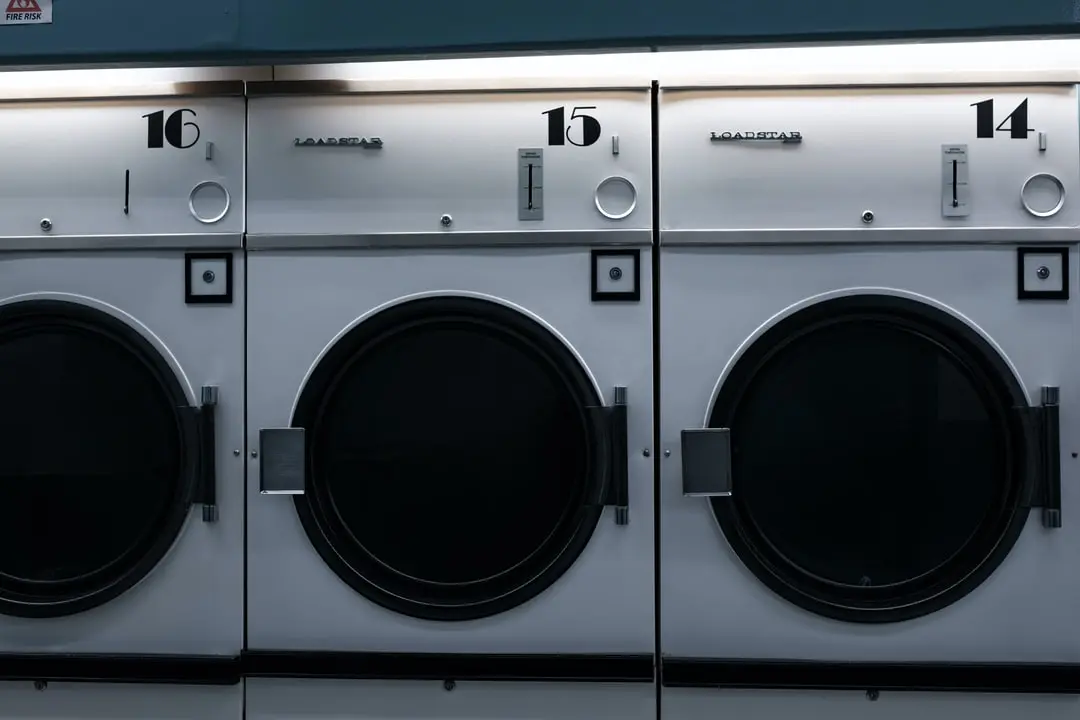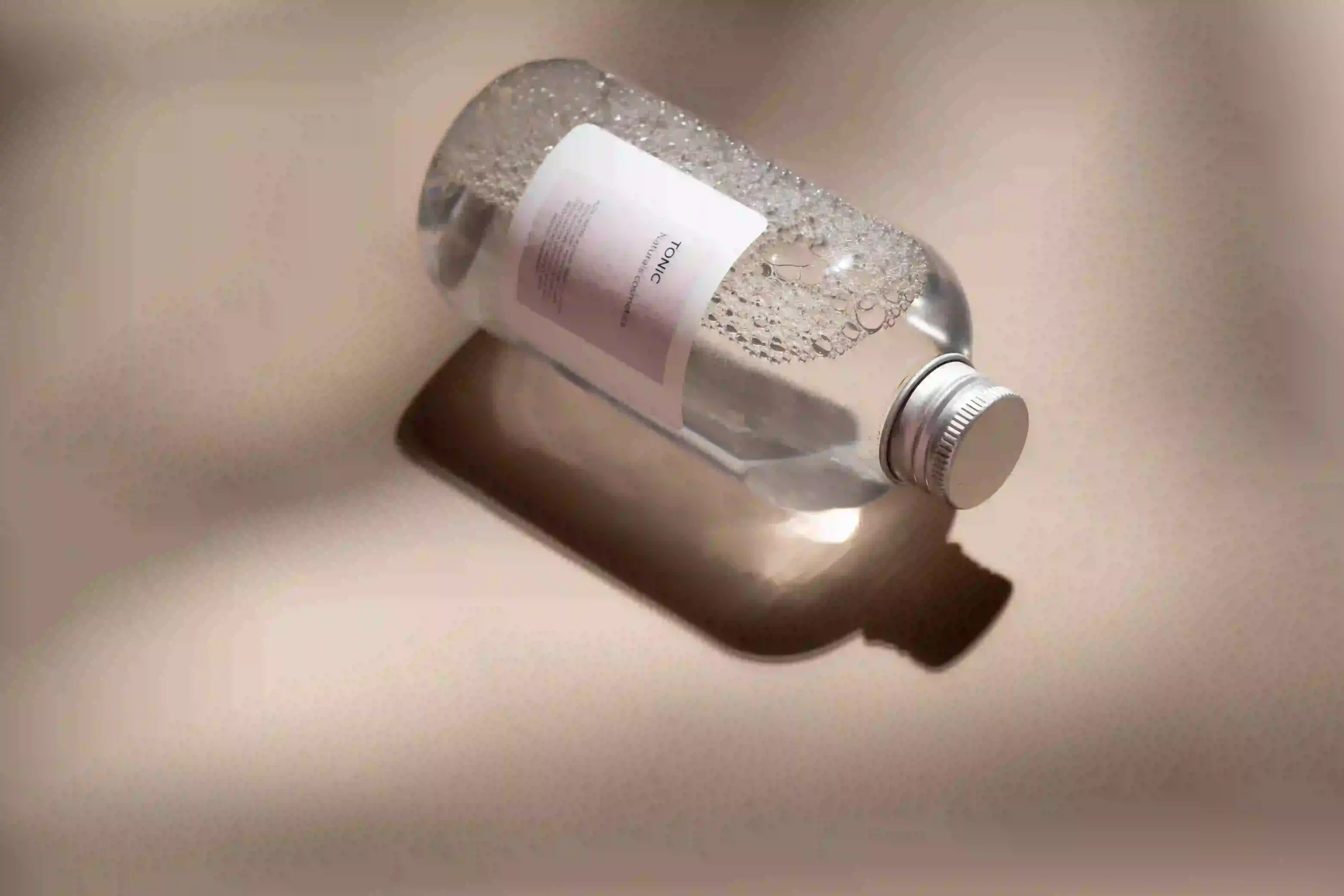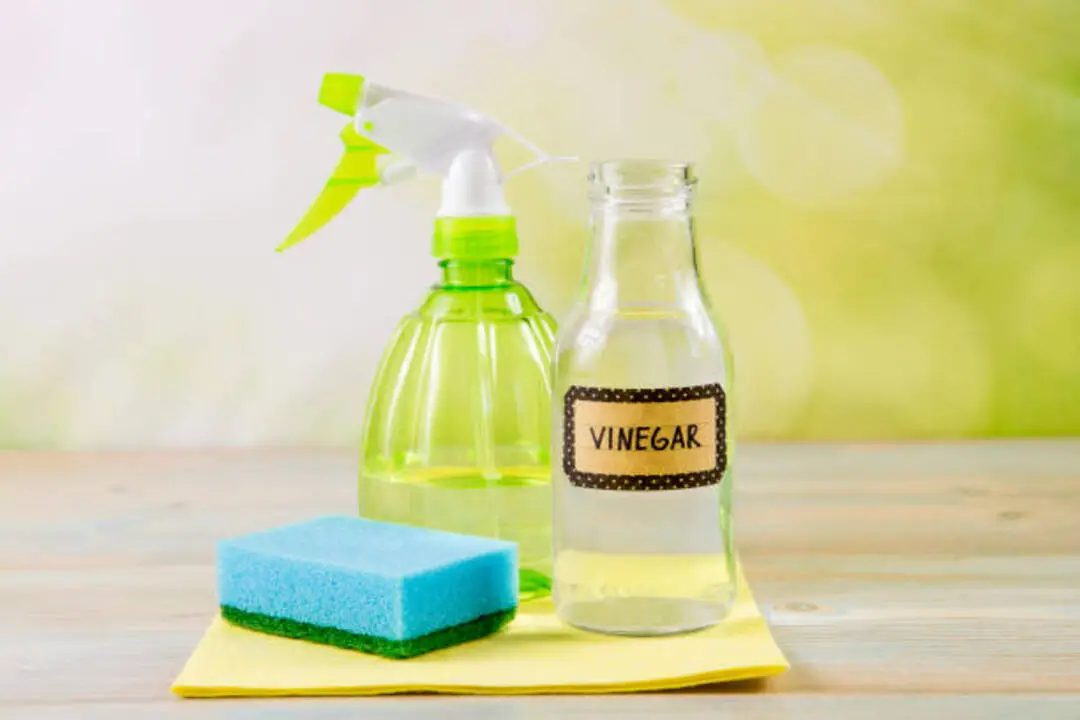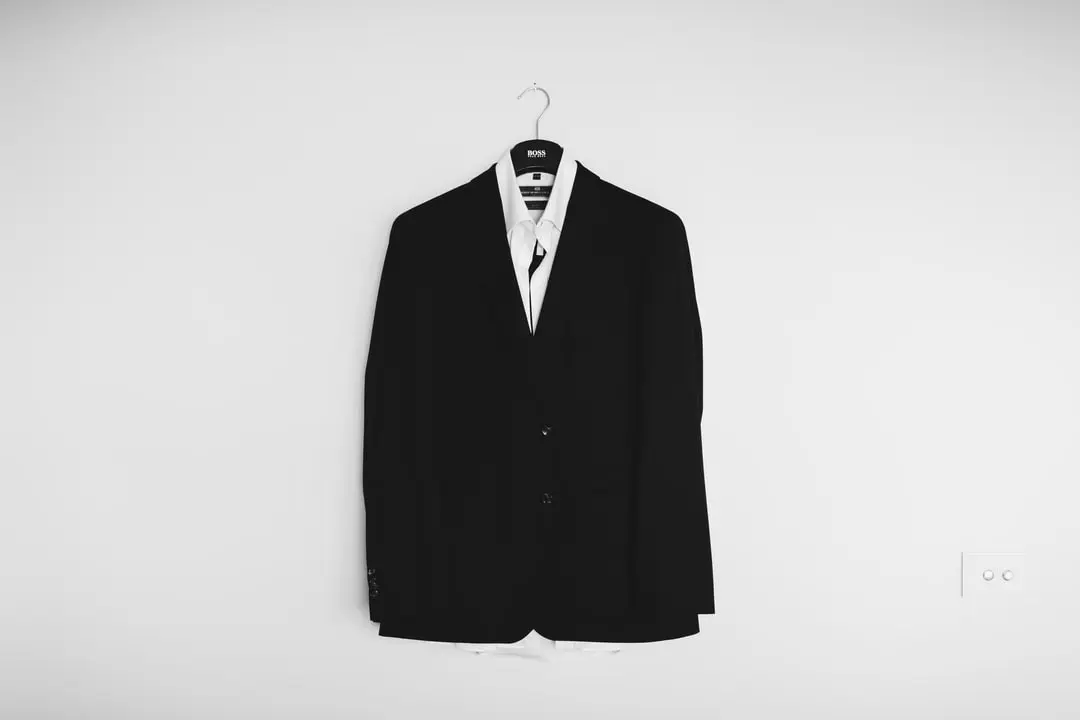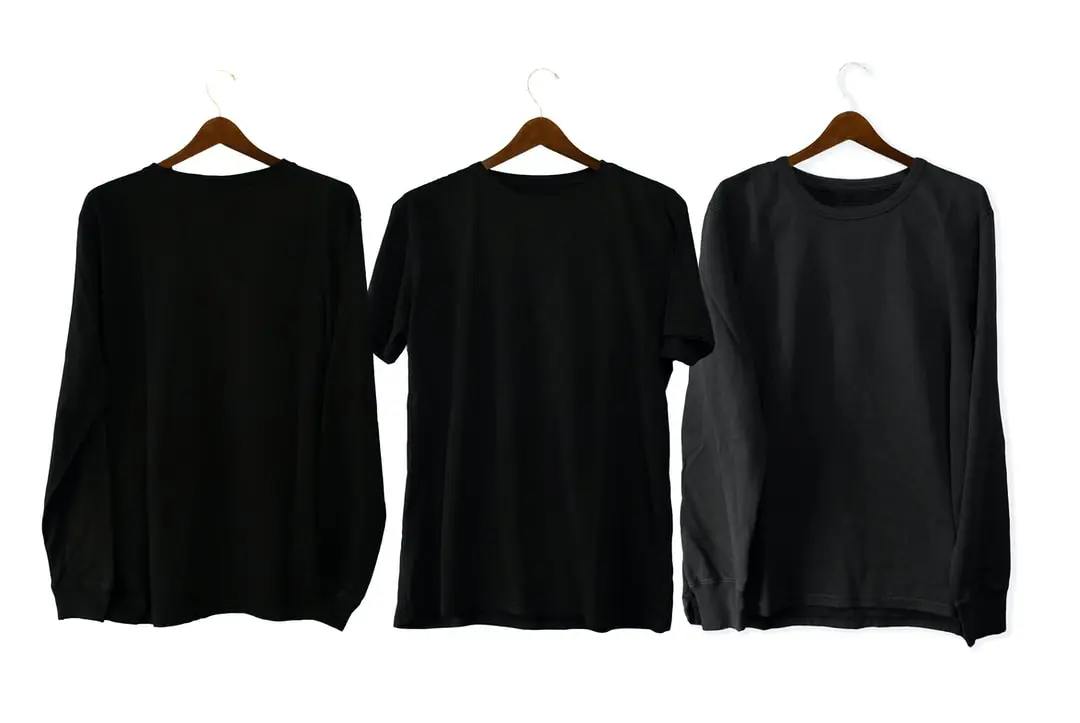The task that never seems to end, the chore that always finds a way to fill up our weekends. Yes, washing clothes is just as fun as it sounds, isn’t it? I mean, who doesn’t love sorting through piles of dirty socks and stained shirts?
But fear not my fellow laundry warriors! With my 15 rules for doing laundry effectively and efficiently, you’ll be able to conquer this never-ending task with ease.
Let’s face it, we all want to spend less time doing laundry and more time enjoying life. The last thing we want is to feel like a slave to our washing machines.
That’s why I’ve compiled this list of essential laundry rules that will not only save you time but also ensure your clothes come out looking their best every time.
So sit back, relax (because you can now), and get ready for some game-changing laundry tips that will give you the freedom you deserve!
Sort Your Laundry Before Washing

When it comes to doing laundry, the first step is to sort your clothes. There are two main sorting methods: by color and by fabric. Sorting by color involves separating darks, lights, and whites to prevent bleeding and discoloration. Sorting by fabric involves separating delicate items from heavier fabrics to prevent damage.
In addition to sorting, it’s important to address any stains before washing. Best practices for stain removal include treating the stain as soon as possible with cold water and a stain remover or detergent. Avoid using hot water as it can set the stain further into the fabric. It’s also important to read the care label on the garment for any specific instructions on stain removal.
The hardness of your water can also impact the effectiveness of your laundry routine. Hard water contains high levels of minerals that can leave residue on clothing and make detergents less effective. Consider using a water-softening agent or adjusting your detergent amount accordingly if you have hard water in your area.
For large households or busy schedules, sorting your laundry ahead of time can save time and hassle in the long run. Try implementing a system such as having separate hampers for each type of clothing or designating certain days for specific loads.
When it comes to reading labels carefully, understanding fabric care instructions is crucial in maintaining the quality of your garments over time.
Read Labels Carefully

Have you ever received a gift that was beautifully wrapped, but it took you forever to actually open it because of all the ribbons and bows? That’s how some people feel when they look at the labels on their clothes. But just like unwrapping that gift, taking the time to decode the laundry label will make your life so much easier in the long run.
When it comes to label decoding, there are a few things you need to pay attention to. First, understand fabric care symbols. These symbols tell you how to wash, bleach, dry, iron, or dry clean your clothes.
Secondly, understanding fiber content is key. Different fibers require different types of care and washing methods. Lastly, check for any specific wash instructions such as water temperature or whether something should be washed alone or with similar colors.
Laundry care tips for delicate fabrics require even more attention to detail. Delicate fabrics such as silk or cashmere require special care and often need to be hand washed or dry-cleaned. It’s important to follow specific instructions carefully in order to avoid damaging these fabrics.
By taking the time to read labels carefully and following the appropriate washing instructions, you can ensure that your clothes will last longer and retain their original quality. In the next section, we’ll discuss another important aspect of laundry – using the right amount of detergent.
Use The Right Amount Of Detergent
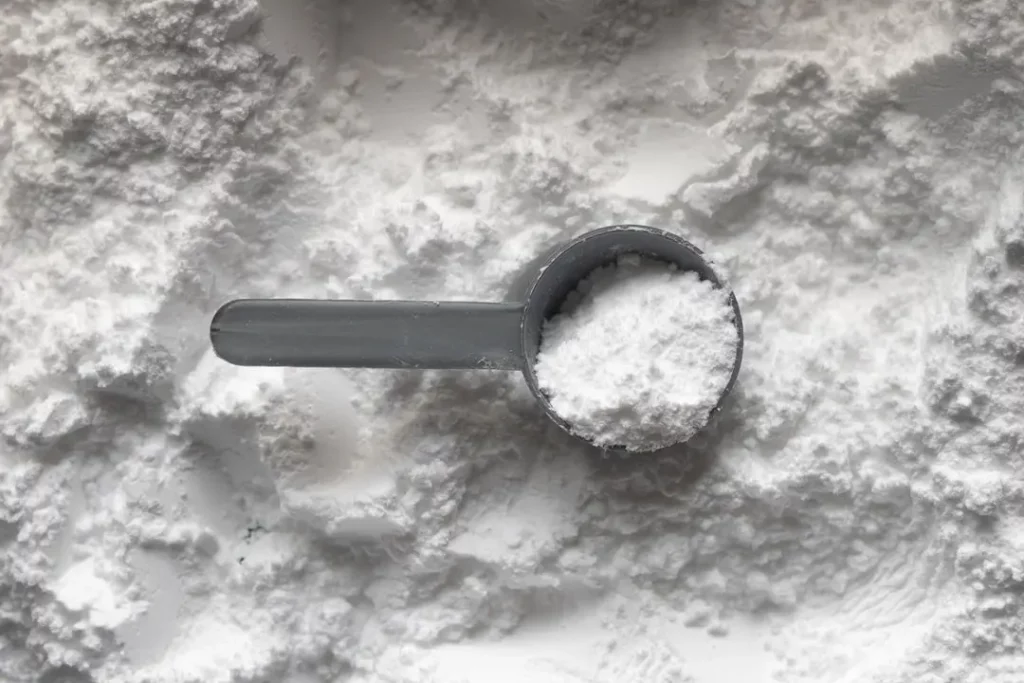
When it comes to laundry, using the right amount of detergent is crucial. Too little and your clothes won’t get clean; too much and you’ll end up with soap residue that can irritate your skin and damage your clothes. So how do you find the perfect balance?
Start by checking the label on your detergent, which should tell you how much to use for a typical load. Keep in mind that this may vary depending on the size of your machine, the level of soil on your clothes, and the hardness of your water. As a general rule of thumb, use about 1/4 to 1/3 cups of detergent per load.
But not all detergents are created equal. Some are formulated for specific types of fabric or stains, while others contain harsh chemicals that can be harmful to the environment or your health. Look for eco-friendly options made from natural ingredients like plant-based enzymes or essential oils, or consider switching to a detergent-free alternative like soap nuts or wool dryer balls.
By using the right amount and type of detergent, you’ll not only get cleaner clothes but also reduce your environmental impact and protect your health.
In the next section, we’ll discuss another important factor in doing laundry: choosing the right temperature for each load.
Choose The Right Temperature

Now that you know how to use the right amount of detergent, it’s time to move on to temperature selection.
I know what you might be thinking – won’t using hot water make my clothes cleaner? While it’s true that hot water can help remove stains and kill bacteria, it can also damage certain fabrics and cause colors to fade. That’s why it’s important to choose the right temperature based on fabric care instructions.
When selecting a temperature, consider the type of fabric you’re washing. Delicate fabrics like silk and wool should be washed in cold water to prevent shrinking or damage. On the other hand, cotton and linen can withstand hotter temperatures for a deeper clean.
Additionally, selecting the appropriate temperature is crucial for color preservation. Hot water can cause bright colors to bleed or fade over time, while cold water helps keep colors vibrant.
Not only does choosing the right temperature promote fabric care and color preservation, but it also promotes energy efficiency. According to Energy Star, using cold water instead of hot can save up to 90% of your washing machine’s energy usage per load. So not only are you being kinder to your clothes, but also the environment!
And if you do encounter stubborn stains that require hot water treatment, try spot-treating them before throwing them in with the rest of your laundry.
Remember: when it comes to temperature selection in laundry, always prioritize fabric care and color preservation over perceived cleanliness. By doing so, you’ll not only prolong the life of your clothes but also save energy and money in the long run.
In our next section, we’ll discuss how using fabric softener sparingly can further benefit your laundry routine.
Use Fabric Softener Sparingly

Now, let’s talk about fabric softeners. While it may seem like a necessary part of laundry, using it sparingly can actually benefit your clothes and your health.
Fabric softeners contain chemicals that can irritate the skin and contribute to indoor air pollution. By eliminating or reducing its use, you’re doing yourself a favor.
But what are the alternatives? There are natural fabric softeners such as vinegar, baking soda, or essential oils that you can add to the rinse cycle. These options are not only better for the environment but also won’t leave any chemical residue on your clothes. Plus, they’ll leave your clothes smelling fresh and clean.
Another benefit of skipping fabric softener is that it can help eliminate static cling in your clothes. To avoid static buildup, try adding a ball of aluminum foil to the dryer with your load, or hang dry your clothes instead.
Your clothes will come out just as clean and fresh without the added chemicals from fabric softener.
So next time you do laundry, consider skipping the fabric softener and trying out some natural options or simply going without it altogether. Your skin and wallet will thank you for it.
Now onto the next important rule: don’t overload the machine.
Don’t Overload The Machine

I’m not exaggerating when I say that overloading the machine is a recipe for disaster. It’s like trying to fit an elephant into a mini cooper – it’s just not going to work out. You might think you’re saving time by cramming everything in there, but trust me, it’ll only lead to more problems down the line.
When it comes to machine capacity, there’s a reason why manufacturers specify the maximum load size. It’s important to respect that limit and not exceed it, as doing so can damage your machine and even cause safety hazards.
Load balancing is also crucial – make sure your laundry is evenly distributed throughout the drum so that you don’t end up with one soggy mess and another bone dry.
Another factor to consider is the water level. If you overload the machine, there won’t be enough water to properly clean everything, which can leave behind dirt and detergent residue. And speaking of detergent, make sure you distribute it evenly among your clothes rather than pouring it all in one spot – otherwise, some items may not get cleaned at all.
Finally, pay attention to spin cycle speed – if your load is too heavy, your machine might struggle with this step and leave you with soaking wet clothes.
To avoid overloading: stick to the recommended maximum load size.
Balance your laundry: distribute it evenly throughout the drum.
Use the right amount of detergent: don’t pour too much in one spot.
Choose the right spin cycle speed: make sure your machine can handle the weight.
Remember: taking a little extra time to properly load your machine will save you from headaches later on. Plus, being mindful of these factors will extend the life of your laundry appliances and ensure that your clothes come out looking their best every time.
Next up, let’s talk about how using cold water can help preserve dark colors!
Use Cold Water For Dark Colors
When it comes to doing laundry, using the right temperature of water is crucial. Many people think that hot water is always the way to go, but this isn’t necessarily true. In fact, using cold water for dark colors can have many benefits.
One of the biggest advantages of using cold water is that it can help prevent dark colors from fading. When you use hot water, it can cause dyes to bleed out of your clothes, which can lead to a loss of vibrancy and saturation over time.
Cold water is gentler on fabrics and helps keep colors looking their best.
Another benefit of using cold water for dark colors is that it’s more energy-efficient. Heating up water takes a lot of energy, so by using cold water instead, you’ll be saving money on your utility bills and helping to reduce your carbon footprint.
On the other hand, when it comes to white or heavily soiled items, hot water may be necessary to get them clean. Hotter temperatures can help break down stains and kill bacteria that may be lurking in your clothing. However, for most everyday loads of laundry, cold water is the way to go if you want your clothes to look their best and last as long as possible.
Pre-Treat Stains

Pre-treating stains is a crucial step in the laundry process. As the saying goes, prevention is better than cure. The same principle applies to laundry, wherein pre-treating stains effectively can save you time and money down the line.
Understanding common laundry stains and how to remove them is vital. For example, bloodstains require cold water and salt, while oil-based stains like lipstick or grease need warm water soaked with dish soap. By knowing these simple yet effective pre-treatment techniques, you can tackle any stain with ease.
When it comes to pre-treating stains, using natural remedies is an excellent option. Common household items such as vinegar, baking soda, or lemon juice can be used as effective pre-treatment solutions. Not only are they gentle on fabrics, but they’re also budget-friendly and environmentally friendly alternatives to harsh chemicals.
Remember to always test natural remedies on a small area of fabric before applying them to the entire garment.
Pre-treating your clothes before washing may seem like an extra step in doing laundry, but it’s essential for maintaining your clothes’ quality and longevity. By following these tips on effective pre-treatment techniques, understanding common laundry stains and how to remove them, using natural remedies when possible, and being mindful not to damage the fabric during the process – your clothes will thank you for it!
Next up: shake out clothes before drying.
Shake Out Clothes Before Drying
Now that you’ve pre-treated those pesky stains, it’s time to move on to the next step: shaking out your clothes before drying them.
This might seem like a small and insignificant task, but it’s actually quite important in ensuring that your clothes come out of the dryer looking their best.
The benefits of shaking out your clothes before drying them are numerous. First and foremost, it helps to reduce wrinkles, which means less ironing for you later on. It also helps to prevent tangling and twisting of clothes, which can lead to uneven drying and even damage to some fabrics.
To effectively shake out your clothes, simply grab each garment by the edges and give it a good shake. You can also gently pull on the fabric in different directions to help smooth out any wrinkles or creases. Just be sure not to shake too vigorously or you may end up stretching out delicate fabrics or even damaging buttons or zippers.
Some common mistakes when shaking out clothes include not doing it at all (which can lead to more wrinkles), shaking too hard, or only shaking certain parts of the garment (like just the sleeves). Remember that different fabric types may require different methods of shaking – for example, heavier fabrics like denim may need a bit more aggressive shaking than delicate silk or lace.
Now that you’ve successfully shaken out your clothes, it’s time to move on to the next step: using the right dryer settings.
By following these simple steps, you’ll be well on your way to achieving laundry success in no time!
Use The Right Dryer Settings
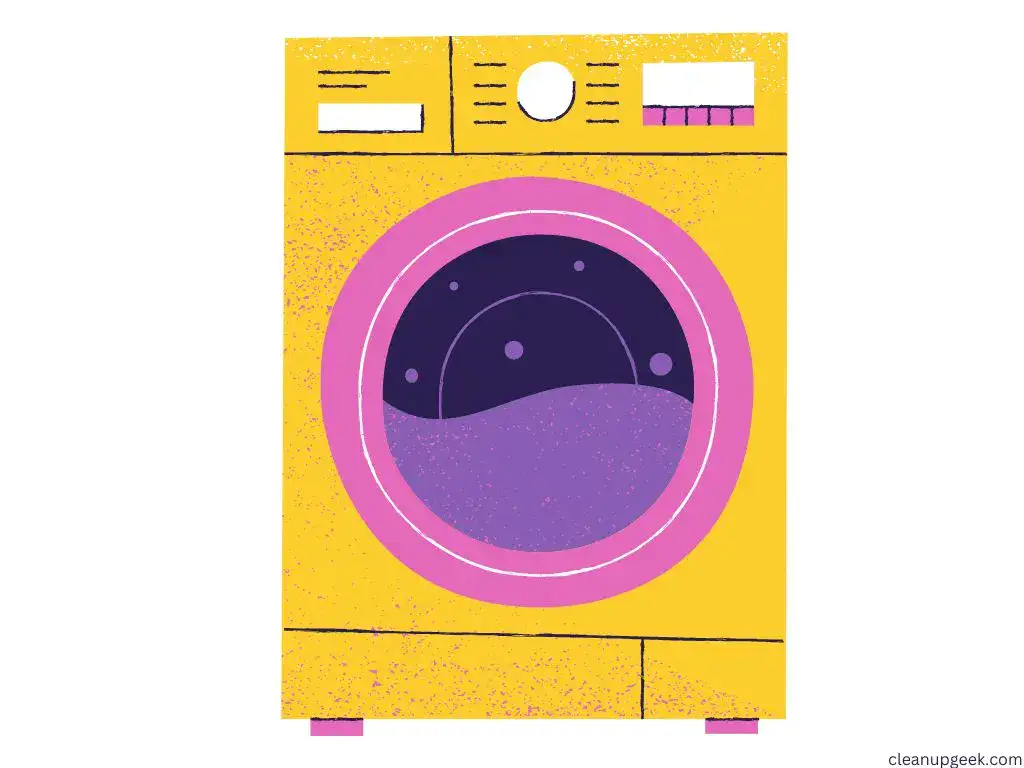
When it comes to doing laundry, using the right dryer settings is just as important as choosing the correct washing cycle. It’s like cooking a meal; you don’t want to overcook or undercook it. The same goes for drying your clothes – you want them to come out perfectly every time.
To start, consider using dryer sheet alternatives such as wool dryer balls or reusable fabric sheets. These options are not only more eco-friendly but also cost-efficient in the long run. Additionally, they can help reduce static cling and soften clothes without the use of harsh chemicals.
Energy-efficient drying tips are also worth considering. For example, clean your dryer’s lint trap after each use and don’t overload the machine – this will ensure that air is circulating properly and your clothes dry faster.
Another tip is to use the moisture sensor setting if available instead of relying on timed drying cycles. This can save energy and prevent over-drying which may lead to shrinkage. Using dryer balls is another excellent way to achieve better results when drying your clothes. These little helpers work by creating space between items in the machine which helps reduce wrinkles and allows hot air to circulate evenly throughout the load.
Not only does this help speed up drying time, but it also reduces static cling. To avoid static cling in the dryer, try adding a damp washcloth or towel into the machine with your load. The moisture from these items can help eliminate static buildup during drying.
Once finished, remove clothes from the dryer promptly to prevent wrinkling and ensure they’re ready for wear or folding.
Remove Clothes From The Dryer Promptly
After using the right dryer settings, it’s important to remove clothes from the dryer promptly. This is because leaving clothes in the dryer for too long can cause wrinkles and shrinkage. Not only that, but it can also make your laundry smell musty.
One of the benefits of removing clothes immediately from the dryer is that it helps prevent wrinkles. As soon as the cycle ends, take out your clothes and shake them out gently before hanging or folding them. For items like dress shirts or blouses, consider hanging them up to dry instead of putting them in the dryer altogether.
When it comes to folding clothes after drying, there are a few tips you can follow to avoid wrinkles and creases. First, fold your clothes while they’re still warm from the dryer. This will help set their shape and prevent deep creases from forming. Also, try not to overstuff your drawers or shelves – leaving some breathing room for your clothes will help keep them wrinkle-free.
Transition:
Now that we’ve covered how to avoid wrinkles and shrinkage in the laundry by removing clothes promptly from the dryer, let’s move on to another important step – how to fold clothes properly.
Fold Clothes Properly
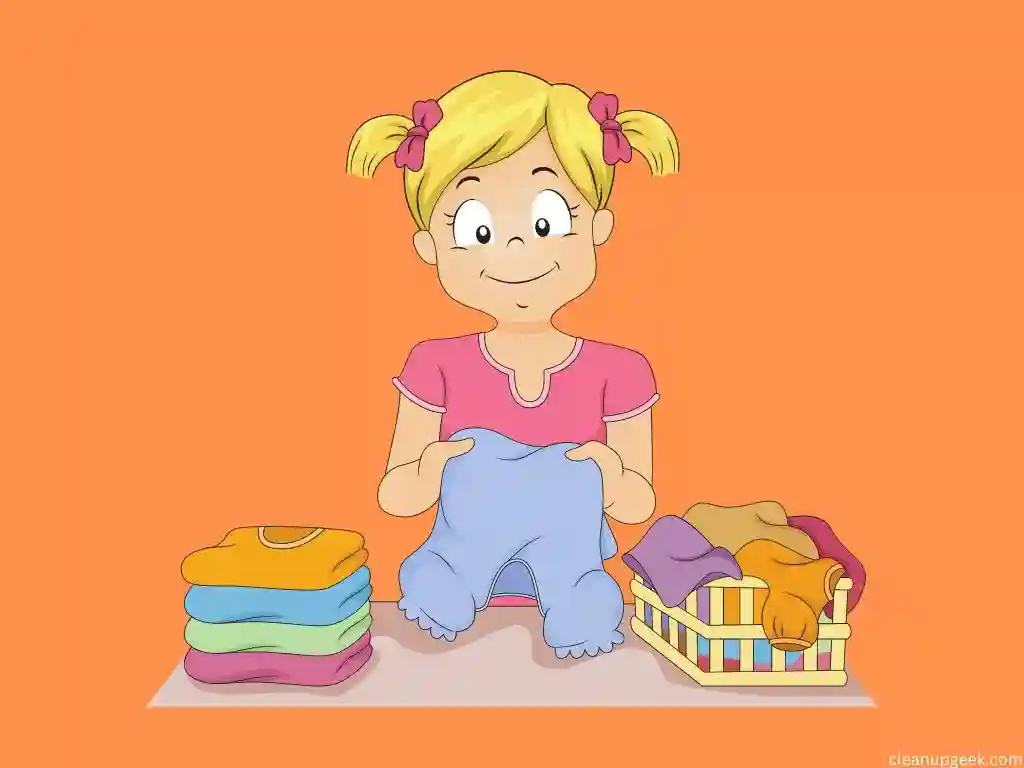
When it comes to laundry, folding clothes properly is just as important as washing them. Not only does it help keep your clothes wrinkle-free, but it can also make your closet organization a lot easier.
Here are some fold techniques that you can try:
- The KonMari Method – This technique involves folding clothes into thirds and then in half again to create a small rectangle shape. It’s great for maximizing space in your drawers or closet.
- The Folding Board – If you’re not confident in your folding skills, consider investing in a folding board. This tool can help you create uniform folds every time and save you time in the process.
- Time Management – Try to fold your clothes as soon as they come out of the dryer or off the drying rack. This will prevent wrinkles from setting in and make the whole process go faster.
- Practice Makes Perfect – Don’t get discouraged if your first few attempts at folding don’t look perfect. With practice, you’ll get better at it and find a method that works best for you.
By mastering the art of folding clothes properly, you’ll not only save time when getting dressed but also keep your clothes looking their best for longer.
In the next section, we’ll talk about how to store clothes correctly to further extend their lifespan and reduce clutter in your home.
Store Clothes Correctly

When it comes to laundry, storing clothes correctly is just as important as washing and drying them properly. After all, what good is a freshly laundered shirt if it’s wrinkled beyond recognition or stuffed into a cramped closet?
To keep your clothes looking their best and make getting dressed a breeze, here are some tips for organizing your closet and preventing wrinkles in stored clothes.
First off, the best storage solutions depend on the types of clothing you have. For items that wrinkle easily, such as dress shirts or blouses, hanging them up in a spacious closet is key. Use sturdy hangers with clips to prevent stretching or creasing.
For bulkier items like sweaters or hoodies, fold them neatly according to their shape and size before placing them in drawers or on shelves. And don’t forget about accessories – keep belts, scarves, and hats organized with hooks or small containers.
When it comes to folding clothes neatly, there are a few tricks to know. Start by smoothing out any wrinkles or creases with your hands before folding along the natural seams of the garment. If you’re unsure of how to fold a specific item, look up tutorials online or ask someone who knows. And remember to always handle delicate fabrics with care – avoid twisting or pulling at them too roughly.
Preventing wrinkles in stored clothes also involves proper maintenance. Be sure to air out garments before putting them away and avoid overcrowding in drawers or closets. If you’re short on space, consider investing in vacuum-sealed bags or under-bed storage containers for seasonal items like coats or swimwear.
With these tips in mind, you’ll be able to store your clothes correctly and keep them looking fresh day after day.
As important as it is to store your clothes correctly, it’s equally crucial to clean your washing machine regularly – after all, this is where all the magic happens! In the next section, we’ll dive into some simple steps for keeping your machine in tip-top shape.
Clean Your Washing Machine Regularly

After properly storing your clothes, it’s important to keep your washing machine clean. Cleaning frequency varies by usage but a general rule is once a month.
Neglecting this task can lead to a buildup of detergent, fabric softener, and hard water deposits which can cause mold and mildew growth or even damage to the machine.
There are many recommended products for cleaning your washing machine such as Affresh, Tide Washing Machine Cleaner, or vinegar and baking soda. Look for products that specifically target mold and mildew buildup and follow the instructions carefully. If you prefer DIY solutions, mixing equal parts of baking soda and water or vinegar and water in a spray bottle can be effective in removing buildup.
If you’re unsure if your washing machine needs cleaning, signs of buildup include funky odors coming from the machine, black spots on the rubber seal, or visible residue on the drum after a cycle.
If you don’t feel confident in tackling this task yourself, there are professional services available that specialize in washing machine maintenance.
Keeping your washing machine clean not only ensures its longevity but helps prevent cross-contamination of germs onto your freshly cleaned clothes. Incorporating this task into your routine may seem daunting but it’s worth it for the peace of mind it brings.
Make laundry day a regular part of your routine by setting a reminder on your phone or calendar app so you never forget this important step again.
Make Laundry Day A Regular Part Of Your Routine

Making laundry day a regular part of your routine is essential for maintaining a clean and organized living space.
One of the first steps in establishing a laundry schedule is to assess your time management habits. Consider how often you need to wash clothes, bedding, and towels according to your lifestyle needs. It’s important to create a schedule that works for you and stick to it.
Another key element to making laundry day more efficient is by organizing your laundry room. Having designated spaces for dirty clothes, detergents, and other products will save you time and effort when doing laundry. Keep the area tidy by putting things away after each use, so everything is easy to find when you need it.
Motivation strategies and rewards can also help make doing laundry feel less tedious. Try listening to music or an audiobook while folding clothes or set a timer for 10 minutes of uninterrupted work with a reward break afterward.
Establishing a reward system can also help motivate you to stay on top of your laundry game. Perhaps after completing five loads of laundry, treat yourself to something special like watching an episode of your favorite TV show or indulging in some ice cream.
Remember that creating a regular laundry routine takes time and effort but is well worth it in the long run. By following these tips on time management, organization, motivation strategies, and reward systems, you’ll be able to establish an effective routine that works for you.
Say goodbye to overflowing hampers and hello to clean clothes!
Conclusion and final thoughts 💭
In conclusion, doing laundry may not be the most exciting chore around the house, but it’s a necessary one. By following these 15 laundry rules, you can make this task more efficient and effective. Trust me; I’ve made all the mistakes in the book when it comes to laundry, but with these rules in place, I no longer dread laundry day.
For example, my friend Sarah used to wash her delicates with her regular clothes, causing many of them to become damaged or ruined. After explaining the importance of sorting your laundry before washing and reading labels carefully, she now has a separate pile for delicate items and has saved money by not having to replace clothing as often.
So take these rules to heart and make laundry day a little less daunting.






